Revamp your indoor green space with 13 unique houseplants! 🌱✨
Transform your home into a botanical oasis with our vibrant Nerve Plants, the enigmatic Black Bat Flower, and more. These aren’t just plants; they’re conversation starters that promise to infuse your living space with wonder and a splash of color. Prepare to dazzle friends and family and breathe new life into your home with these exotic additions. Let’s dive into a green revolution and watch your indoor garden thrive🏡💐.
Get set for an extraordinary botanical adventure! 🚀🍃
Discover Rare and Unique Houseplants
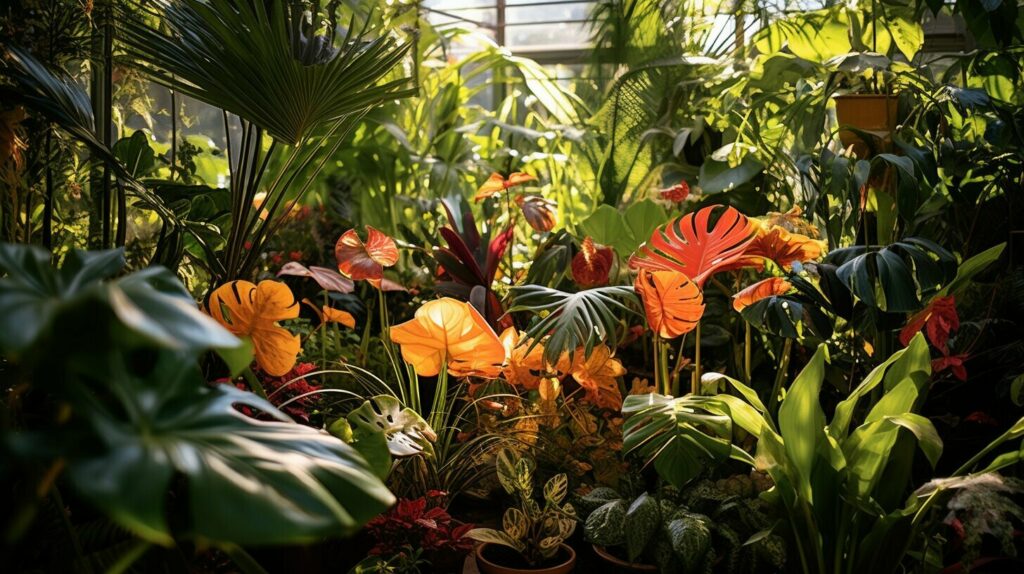
While it’s true that many stores tend to carry the same popular houseplants, there is a whole world of unique and rare plants waiting to be discovered. These plants may not be as commonly found in garden centers or home improvement stores, but they are worth seeking out for their one-of-a-kind beauty. If you’re tired of the usual Snake Plants and Pothos, it’s time to think outside the pot and explore the wonderful world of rare and unique houseplants.
When you delve into the realm of rare indoor plants, you’ll find an array of fascinating options. From the colorful leaves of the Nerve Plant to the unusual flowers of the Black Bat Flower, these uncommon houseplants will bring a sense of wonder and intrigue to your indoor oasis.
If you’re looking to add a touch of uniqueness to your plant collection, consider the Albuca Frizzle Sizzle with its spiraled leaves or the Pencil Cactus with its quirky, pencil-like shape. For those who love fragrance, the Night Blooming Jasmine and the Banana Shrub are excellent choices. And if you’re a fan of eye-catching patterns, the Polka Dot Begonia and Calathea Ornata will not disappoint.
Nerve Plant: A Colorful Addition to Your Indoor Jungle
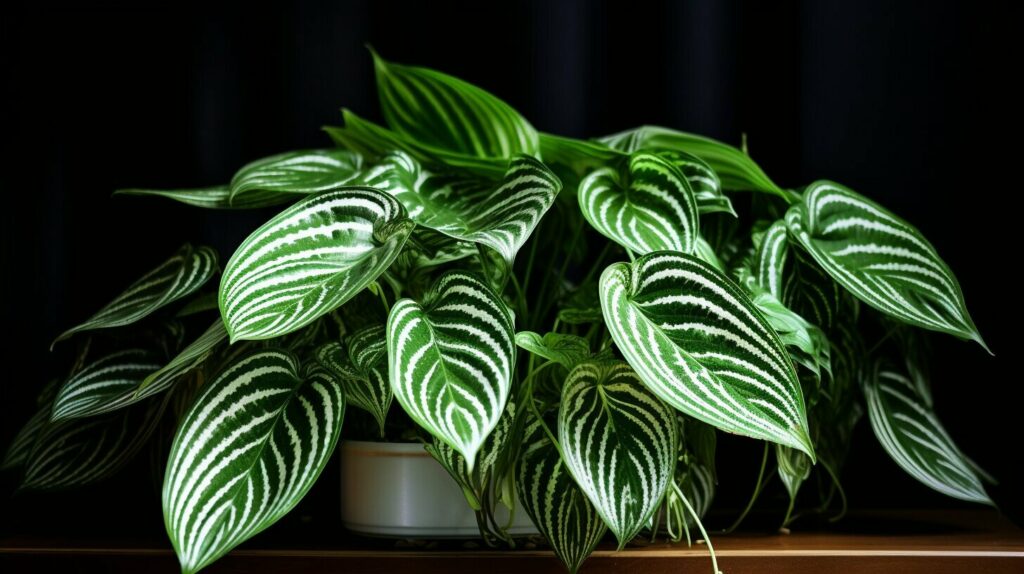
If you’re searching for a houseplant that will bring a burst of color and intrigue to your indoor space, look no further than the Nerve Plant. Native to South America, this stunning plant features vibrant leaves adorned with bright red veins, resembling intricate nerve patterns. The unique foliage of the Nerve Plant makes it a standout choice for any room.
One of the great things about the Nerve Plant is its ability to thrive in low humidity conditions, making it an excellent choice for indoor environments where dry air is common. With regular watering and proper care, this plant can flourish even in spaces where other plants might struggle. Just be sure to protect it from cold drafts, as it prefers warmer temperatures.
Key Features:
- Vibrant leaves with bright red veins
- Thrives in low humidity conditions
- Requires regular watering
- Best suited for indoor environments
Desert Rose: A Dazzling and Drought-Tolerant Beauty
When it comes to adding a touch of vibrant color to your indoor garden, look no further than the Desert Rose. With its stunning and colorful flowers, this exotic houseplant is sure to captivate any plant enthusiast. Originating from the deserts of Africa and the Middle East, the Desert Rose is not only beautiful but also incredibly resilient, making it a perfect choice for those who may forget to water their plants.
The Desert Rose is aptly named for its ability to thrive in dry and arid conditions. This drought-tolerant plant can tolerate occasional lapses in watering, making it a forgiving choice for busy or forgetful plant owners. To keep your Desert Rose happy, simply allow the soil to dry out between waterings and provide it with ample sunlight. With its low water needs and tolerance for neglect, this plant is an excellent addition to any collection.
Why Choose the Desert Rose?
- Colorful and vibrant flowers that add a pop of visual interest to any space.
- Drought-tolerant and forgiving, making it perfect for busy or forgetful plant owners.
- Thrives in dry and arid conditions, making it a resilient choice for indoor environments.
- Range of colors available, allowing you to create a stunning display of blooms.
Banana Shrub: A Fragrant Delight for Bright Spaces

Looking to add a touch of fragrance to your indoor jungle? Look no further than the Banana Shrub. Despite its name, this unique houseplant is not actually related to bananas. However, it does earn its name from the delightful banana-like scent that emanates from its beautiful flowers. This makes it a standout addition to any plant collection, bringing not only visual appeal but also a pleasant aroma to your space.
The Banana Shrub thrives in bright light, making it an ideal choice for sunny windowsills. When placed in a sunlit spot, this plant will reward you with vigorous growth and abundant blooms. However, be cautious not to overwater the Banana Shrub as it is prone to root disease. Allow the soil to dry out slightly between waterings, ensuring proper drainage for optimal health.
Benefits of the Banana Shrub:
- Delightful banana-like fragrance
- Thrives in bright light
- Attractive foliage adds visual interest
- Perfect for sunny windowsills
- Low-maintenance plant
- Brings a touch of the tropics indoors
Pencil Cactus – A Unique Houseplant with a Distinctive Shape and Low Water Needs
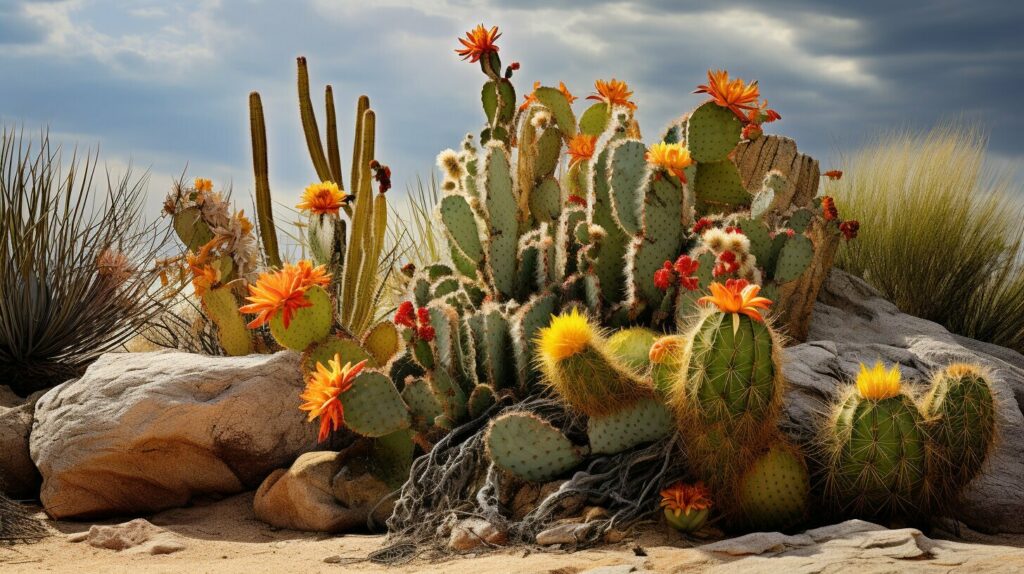
When it comes to adding a touch of uniqueness to your indoor plant collection, look no further than the Pencil Cactus. This extraordinary houseplant features a distinctive shape that resembles a cluster of tightly packed pencils, making it truly stand out among other houseplants. With its slender and elongated branches, the Pencil Cactus adds an architectural and modern element to any space.
In addition to its unique shape, the Pencil Cactus is also known for its low water needs, making it a perfect choice for those who tend to forget about watering their plants. This desert-loving plant thrives in bright and sunny spots, so placing it on a windowsill with ample sunlight is ideal. Just be sure to handle it with care, as the milky sap of the Pencil Cactus can be toxic.
Key Features of the Pencil Cactus:
- Distinctive shape resembling tightly clustered pencils
- Low water needs, perfect for forgetful plant owners
- Thrives in bright and sunny spots
- Requires minimal maintenance and care
Albuca Frizzle Sizzle: A Unique Houseplant with Spiraled Leaves
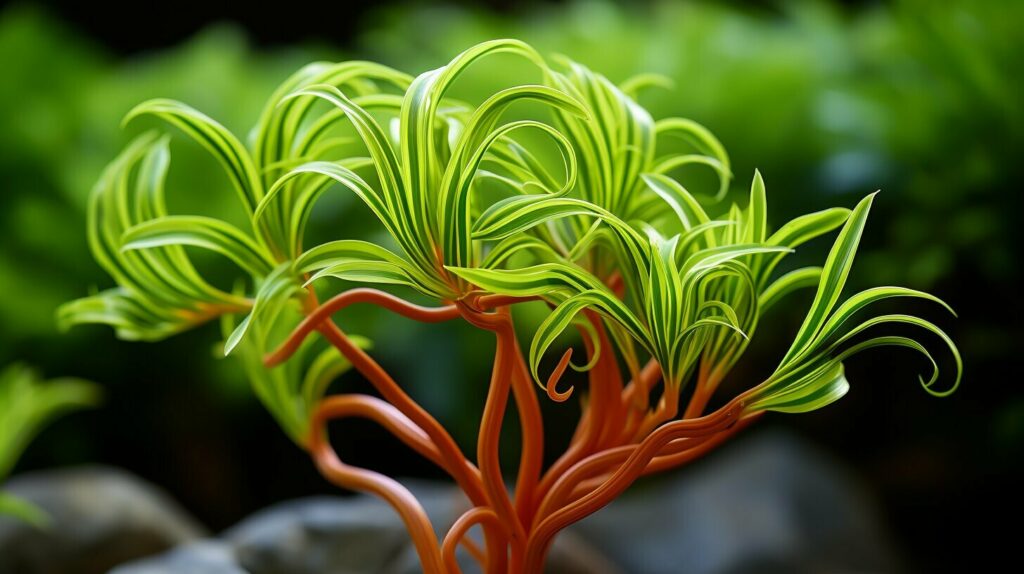
If you’re on the hunt for a houseplant that will add a touch of whimsy and intrigue to your indoor space, look no further than the Albuca Frizzle Sizzle. This rare and unusual plant features thick, spiraled leaves that are sure to captivate anyone who sees them. With its modern and architectural appearance, the Albuca Frizzle Sizzle is like a work of art.
To keep this unique plant happy and thriving, provide it with plenty of bright light. Place it near a south-facing window where it can soak up those rays. The Albuca Frizzle Sizzle also appreciates well-draining soil, so be sure to choose a potting mix that allows excess water to flow through. Remember to let the soil dry out between waterings to avoid overwatering, as this can cause root rot.
Benefits of Albuca Frizzle Sizzle:
- The spiraled leaves add a modern and architectural element to any room.
- It thrives in bright light, making it a great choice for sunny windowsills.
- The unique appearance of the Albuca Frizzle Sizzle makes it a standout addition to any plant collection.
- This rare houseplant is sure to be a conversation starter and bring joy to your space.
Rare and Unique Houseplants for Your Terrarium: Club Moss
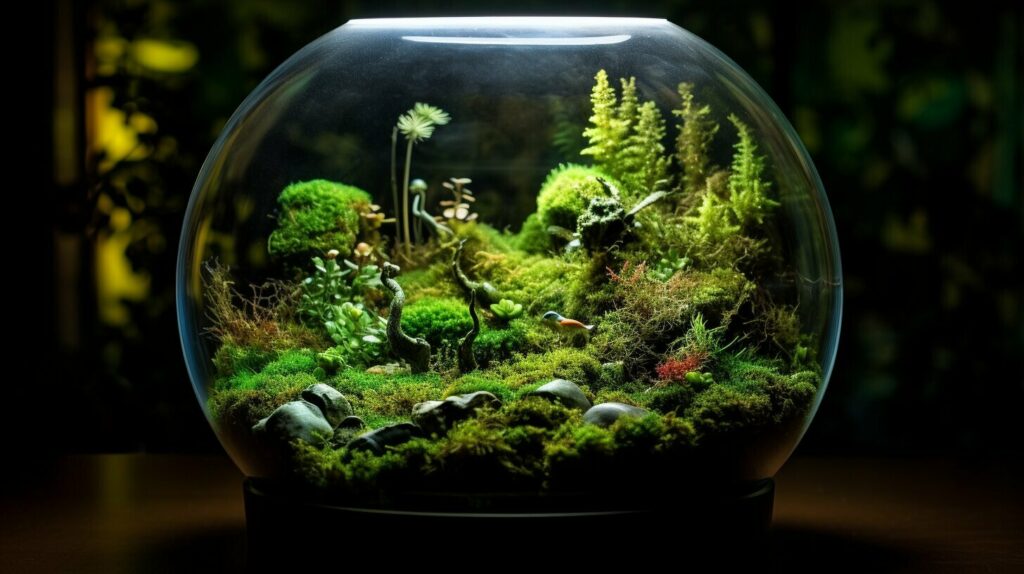
If you’re a fan of creating lush and vibrant terrariums, then the Club Moss is a must-have plant for your collection. With its delicate foliage and unique appearance, the Club Moss adds a touch of greenery and charm to any enclosed environment. This compact plant thrives in low-light conditions, making it an ideal choice for terrariums with limited natural light. Its small size also allows it to fit perfectly in terrariums of all shapes and sizes.
The Club Moss requires high humidity levels to thrive, so it’s important to provide a humid environment for this plant. Mist the foliage regularly or place a small bowl of water near the plant to increase humidity. However, be cautious not to overwater, as excessive moisture can lead to root rot. Let the soil dry out slightly between waterings to ensure optimal growth and health.
Why Choose Club Moss for Your Terrarium?
- Thrives in low-light conditions
- Compact size fits well in terrariums
- Adds a touch of greenery and charm
- Requires high humidity levels
- Mist regularly to increase humidity
- Let soil dry out between waterings
Polka Dot Begonia: A Unique Houseplant with Striking Leaves
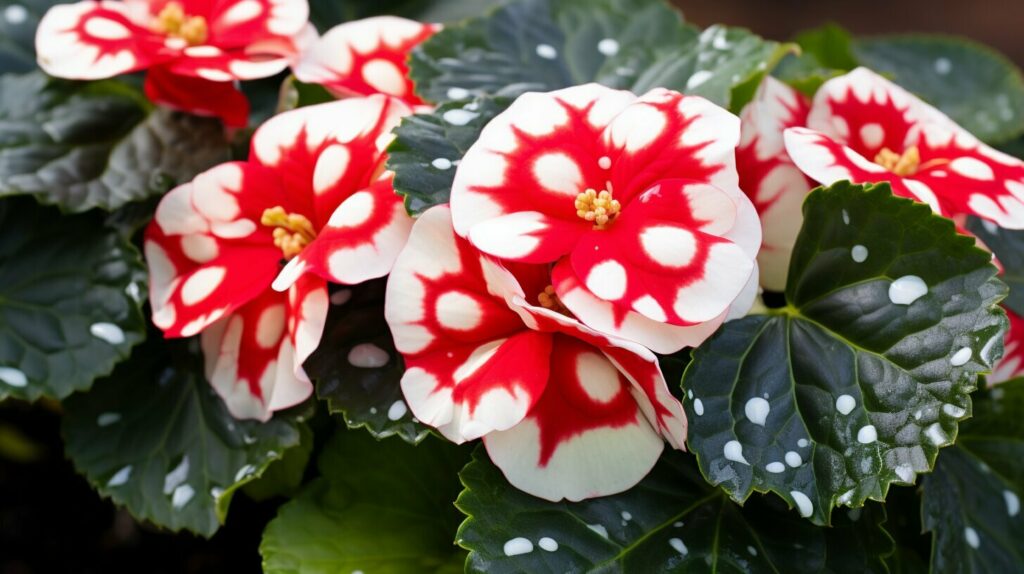
If you’re on a quest to find a houseplant that stands out from the crowd, look no further than the Polka Dot Begonia. This stunning plant features leaves that are anything but ordinary. With their distinctive silver spots, they give the appearance of playful polka dots, adding a touch of whimsy to any space.
The Polka Dot Begonia is a true showstopper with its unique foliage. Its leaves are medium-sized and have a slightly asymmetrical shape, creating an interesting visual effect. The contrasting silver spots create a striking pattern that is sure to catch the eye of anyone who enters the room. Whether you place it on a shelf, a desk, or a windowsill, this begonia will bring a pop of personality to your indoor jungle.
Standout Features:
- Distinctive silver spots on the leaves for a polka dot effect
- Medium-sized leaves with an asymmetrical shape
- Adds a touch of whimsy and personality to any space
- Thrives in moderate light conditions, making it suitable for various indoor environments
Black Bat Flower: A Unique and Striking Addition to Your Indoor Garden
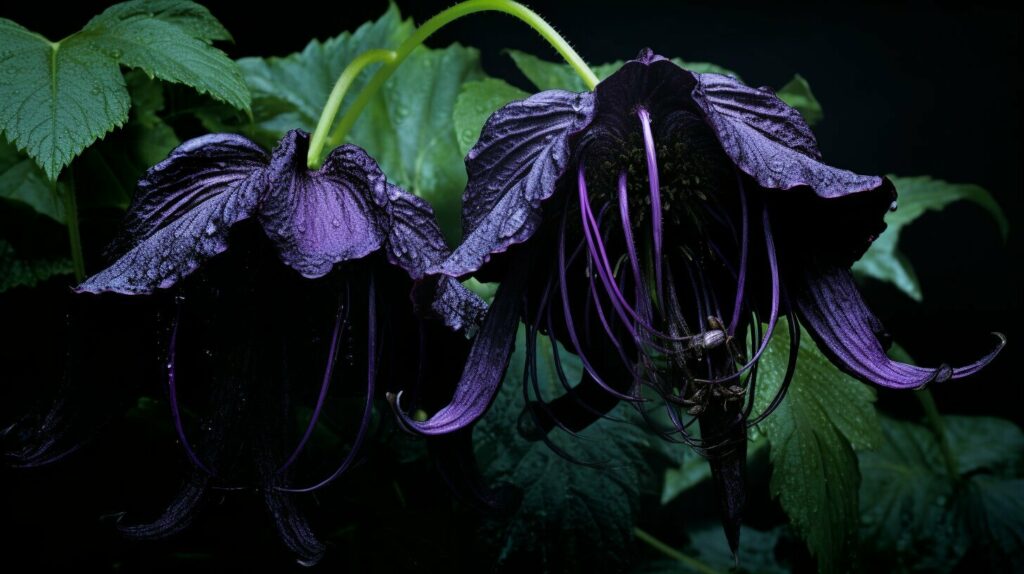
If you’re in search of a show-stopping plant that is sure to turn heads, look no further than the Black Bat Flower. With its unusual flowers and tropical allure, this plant is a must-have for any plant collector or enthusiast.
The Black Bat Flower, scientifically known as Tacca chantrieri, gets its name from its dark, bat-like petals that surround a long, protruding whisker. This distinctive flower is native to the tropical regions of Southeast Asia and is a true marvel of nature. Its almost black petals create a striking contrast against its bright green foliage, making it a visual masterpiece.
As a tropical plant, the Black Bat Flower thrives in temperatures above 60 degrees Fahrenheit and requires high humidity levels to flourish. It prefers indirect light and should be positioned in a spot where it can receive bright but filtered sunlight. To ensure proper care, allow the plant to dry out between waterings and avoid overwatering, as excessive moisture can lead to root rot.
Why Choose the Black Bat Flower?
1. Unusual Flowers: With its bat-like petals and long whisker, the Black Bat Flower is a conversation starter and a truly unique addition to any plant collection.
2. Tropical Beauty: Bring a touch of the tropics into your home with this exquisite plant. Its vibrant green foliage and dark petals evoke a sense of the exotic.
3. Visual Appeal: Whether displayed as a centerpiece or on a shelf, the Black Bat Flower is sure to captivate attention and add an element of intrigue to any space.
Night Blooming Jasmine – Fragrant Flowers in High Humidity
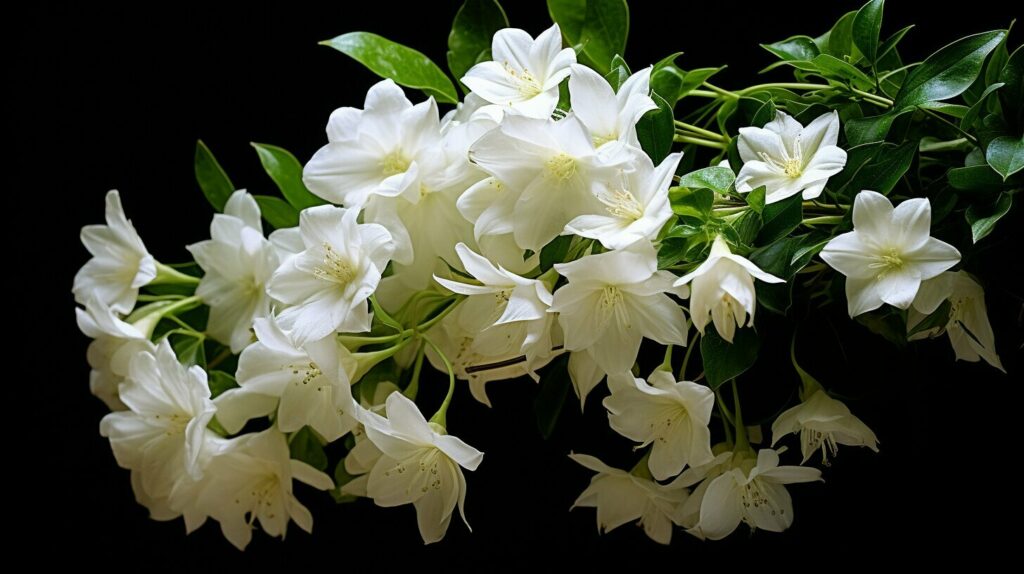
If you’re a fan of enchanting fragrances wafting through your home, then the Night Blooming Jasmine is a must-have addition to your collection. This rare houseplant is known for its glossy dark green leaves and tiny white flowers that emit a captivating scent, particularly at night.
The Night Blooming Jasmine thrives in high humidity environments, making it an ideal choice for bathrooms or kitchens. Its natural habitat in tropical regions gives it a preference for warm and humid conditions. Therefore, if you live in a dry climate, you may need to provide additional moisture by misting the leaves or using a humidifier.
Tweedle Dee Begonia: A Unique Plant with a Bonsai-like Appearance
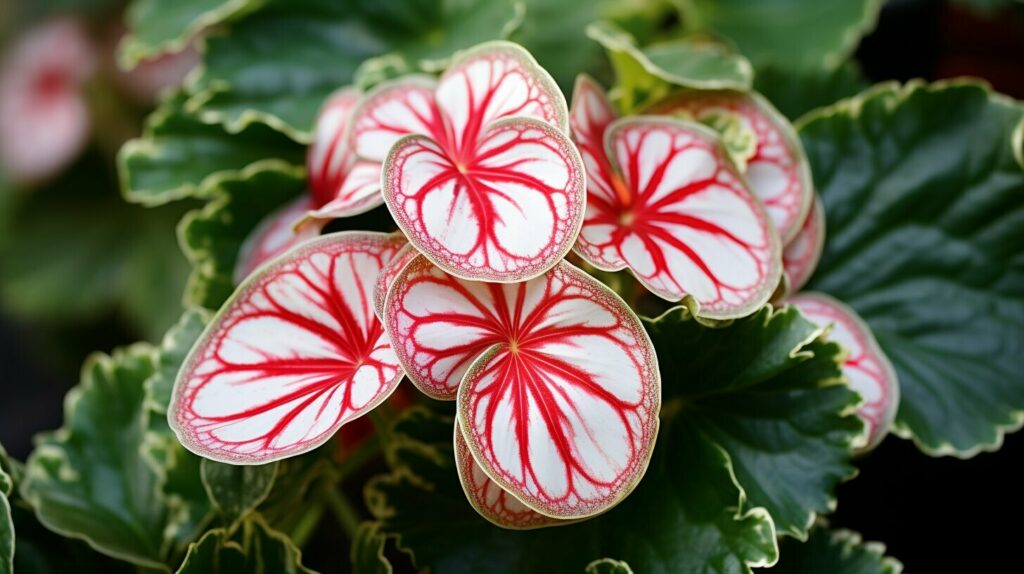
Looking to add a touch of elegance and sophistication to your indoor jungle? Look no further than the Tweedle Dee Begonia. This stunning houseplant offers a unique twist on the traditional begonia with its bonsai-like appearance. With a beautiful trunk and small leaves adorned with silver edge markings, the Tweedle Dee Begonia is truly a gem in any houseplant collection.
While the Tweedle Dee Begonia doesn’t require direct sunlight, it thrives in partial sun conditions, such as a west or east-facing window. To keep this plant happy and healthy, maintain indoor temperatures above 60 degrees Fahrenheit and provide higher humidity levels, ideally over 50%.
Key Features of the Tweedle Dee Begonia:
- Bonsai-like appearance with a beautiful trunk and small leaves with silver edge markings
- Thrives in partial sun conditions, such as a west or east-facing window
- Requires indoor temperatures above 60 degrees Fahrenheit
- Benefits from higher humidity levels, ideally over 50%
Calathea Ornata
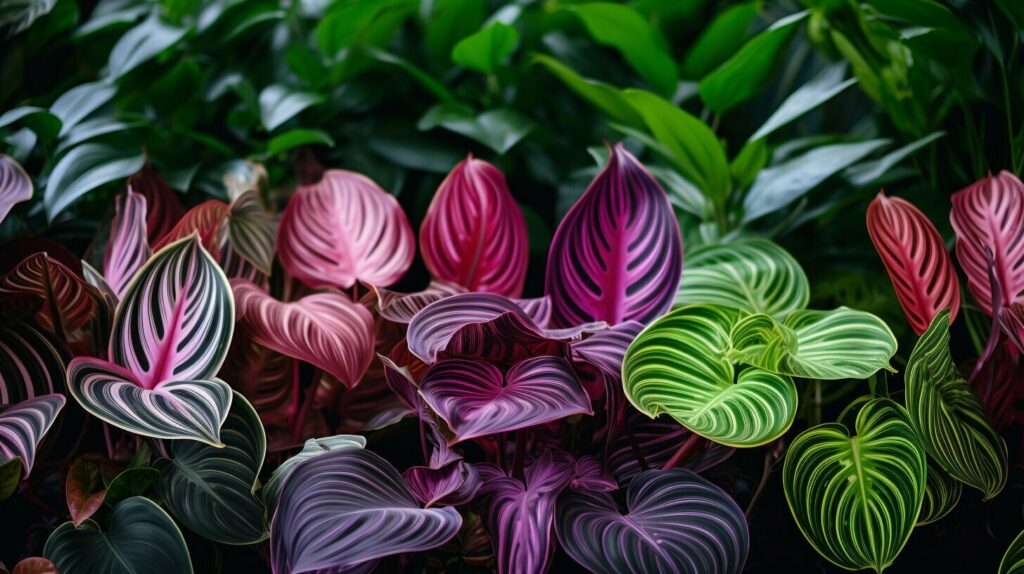
If you’re looking for a houseplant that combines elegance and unique aesthetics, look no further than the Calathea Ornata, also known as the Pinstripe Plant. This visually striking plant originates from the tropical regions of South America and is known for its ornate striped leaves. The contrasting stripes of dark green and pink give the Calathea Ornata a striking appearance that will surely make it a standout in your indoor jungle.
One of the advantages of having a Calathea Ornata is its adaptability to indoor conditions. It thrives in moderate humidity and indirect light, making it suitable for various spaces in your home. To keep this gorgeous plant healthy, ensure that the soil is consistently moist but not overly saturated. It’s important to strike a balance and avoid overwatering, as this can lead to root rot.
Rare and Unique: The Heart-Shaped Delight of Hoya Kerrii
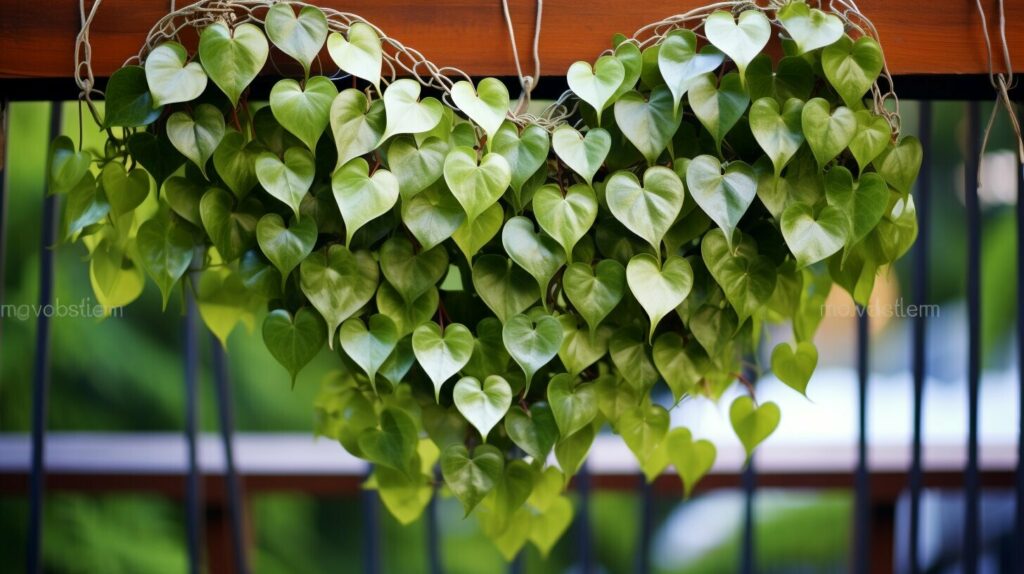
When it comes to rare and unique houseplants, the Hoya Kerrii, also known as the Sweetheart Plant, is a true gem in any collection. Its heart-shaped leaves, symbolic of love and affection, make it an instant favorite among plant enthusiasts. The Hoya Kerrii thrives in indirect light, making it suitable for various indoor spaces. Whether you place it on a sunny windowsill or in a well-lit corner, this plant will brighten up your living space with its charming foliage.
One of the reasons why the Hoya Kerrii is highly sought after is its low-maintenance nature. It doesn’t require frequent watering, so you can let the soil dry out slightly between waterings. This makes it an ideal choice for busy individuals or those who tend to forget their plant care routines. Just be sure not to overwater, as this can lead to root rot.
Key Features of the Hoya Kerrii:
- Heart-shaped leaves that symbolize love and affection
- Thrives in indirect light, making it adaptable to different indoor spaces
- Low-maintenance plant that doesn’t require frequent watering
- Can be propagated easily by taking cuttings
Monstera Peru
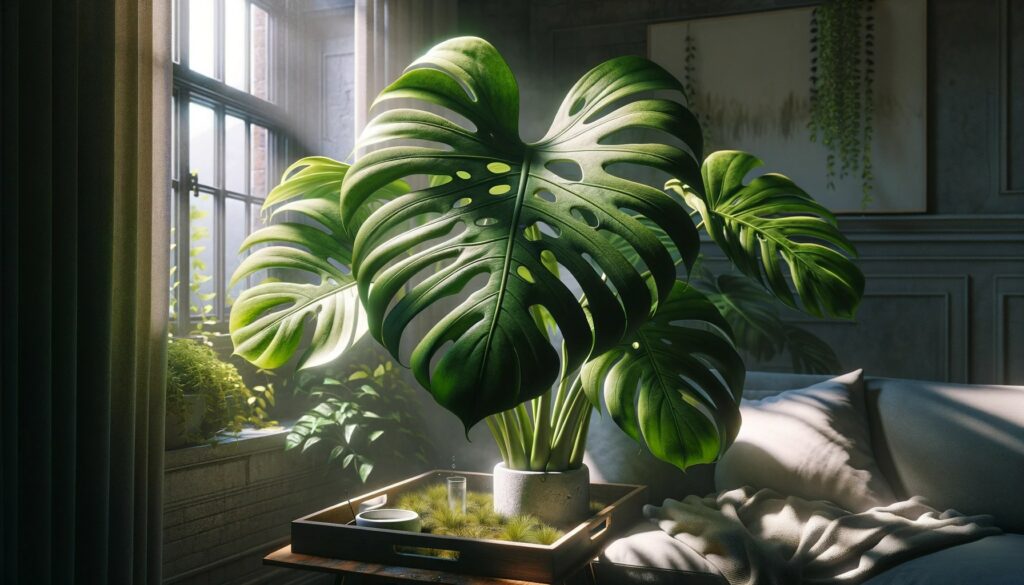
If you’re a fan of unique and eye-catching houseplants, then you won’t want to miss out on the Monstera Peru. This rare and sought-after plant is known for its stunning fenestrated leaves, which feature intricate patterns of holes and splits. With its distinctive foliage, the Monstera Peru is sure to be the star of your indoor jungle.
To keep your Monstera Peru thriving, make sure to provide it with bright indirect light. Place it near a window where it can receive plenty of filtered sunlight throughout the day. This plant loves humidity, so consider misting it regularly or placing a tray of water nearby to increase the moisture in the air.
FAQ
Are these rare and exotic houseplants difficult to find?
While they may not be as commonly found in garden centers or home improvement stores, these plants are worth seeking out for their unique beauty. You may need to visit specialty plant nurseries or search online to find them.
How do I care for these rare and unique houseplants?
Each houseplant has its own specific care requirements, but in general, they thrive in bright indirect light and require regular watering. Be sure to research the specific needs of each plant and provide them with proper care.
Can these rare houseplants be grown indoors?
Yes, all of the plants on this list can be grown indoors. They are well-suited for indoor environments and can thrive if provided with the right conditions, such as proper lighting, temperature, and humidity levels.
Are these rare houseplants suitable for beginners?
Some of these houseplants may be more suitable for experienced plant owners due to their specific care requirements. However, many of them can be enjoyed by beginners as well, as long as they are willing to learn and provide the necessary care.
Where can I get these rare and exotic houseplants?
You can try visiting specialty plant nurseries, botanical gardens, or searching online plant marketplaces to find these rare and unique houseplants. Online plant sellers may have a wider variety available, making it easier to find the specific plants you’re looking for.
Can these rare houseplants be propagated?
Yes, many of these rare houseplants can be propagated through various methods, such as stem cuttings, leaf cuttings, or division. Research the specific propagation methods for each plant to ensure successful propagation.
Do these rare houseplants require special soil or fertilizers?
These houseplants generally do well in well-draining potting soil. You can also mix in perlite or orchid bark to improve drainage. As for fertilizers, they can benefit from regular feeding with a balanced houseplant fertilizer according to the instructions on the package.
Are these rare houseplants pet-friendly?
While most of these houseplants are safe for humans, some of them may be toxic to pets. It’s important to do your research and ensure that the plants you choose are safe for your furry friends. If you have pets, consult with a veterinarian or choose pet-friendly houseplants.
Can I grow these rare houseplants in low-light conditions?
Some of these houseplants can tolerate low-light conditions, but they generally thrive in bright indirect light. If you have limited natural light in your space, you can supplement it with artificial grow lights to provide the necessary light for their growth.
How long do these rare houseplants typically live?
The lifespan of these houseplants varies depending on the specific plant and how well it is cared for. With proper care, many of these plants can live for several years or even decades. Regular maintenance and providing the appropriate growing conditions will help prolong their lifespan.
Can these rare houseplants be grown outdoors?
While these houseplants are primarily grown indoors, some of them can be grown outdoors in suitable climates. Research the specific plant’s natural habitat and growing requirements to determine if it can be successfully grown outdoors in your area.





